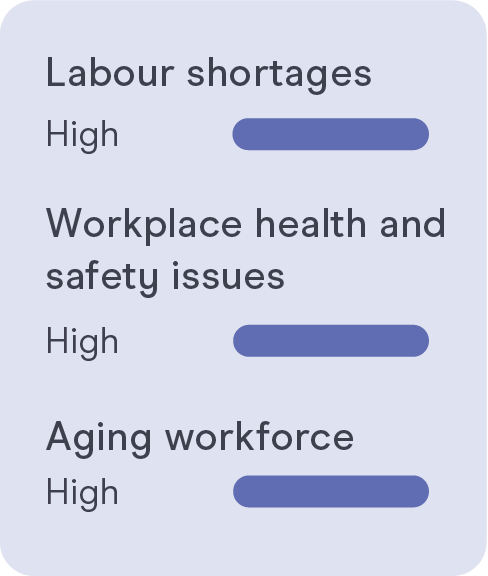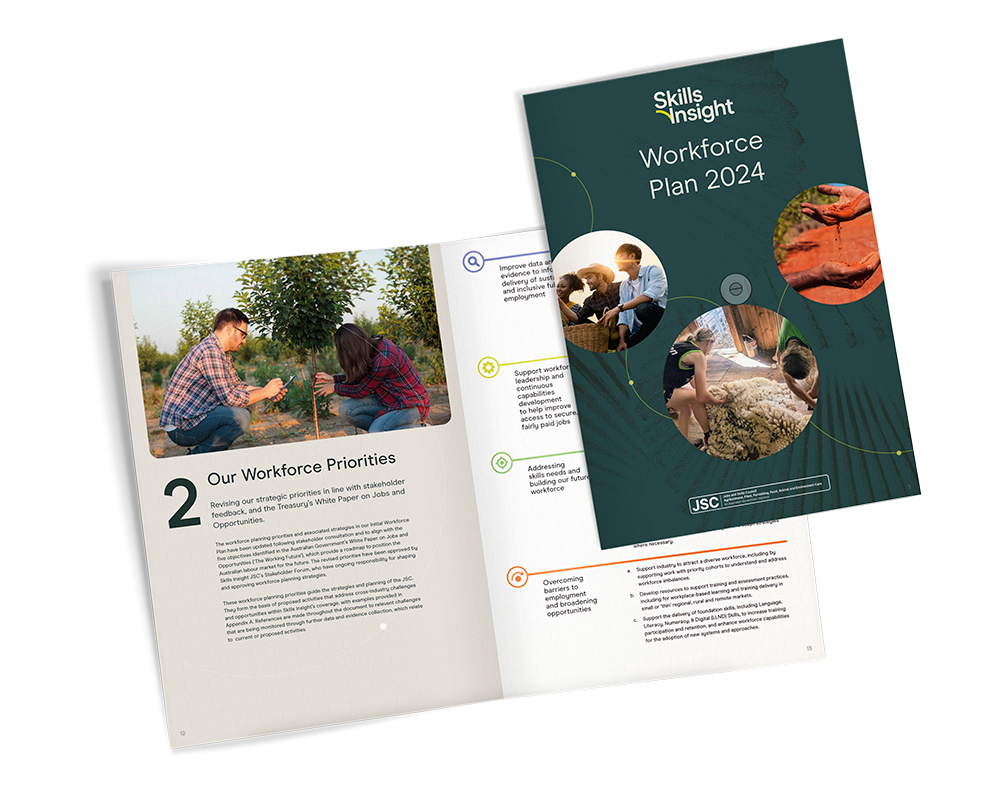The livestock industry plans, organises, controls, coordinates and performs farming operations to breed and raise livestock for the production of breeding stock, meat and other products and uses, which covers the value chain associated with products such as milk, eggs, and honey. It includes both specialised or mixed livestock farms that breed and farm one or a variety of animals (e.g. sheep and beef cattle), and mixed crop and livestock farming operations.
Key updates
Safety risks continue to be a concern
Data from Safe Work Australia has shown that in FY 2021-22, there has been 1,002 serious injury compensation claims by Sheep, Beef Cattle & Grain Farmers, 214 claims by Dairy Farmers, and 275 claims by Other livestock farmers. The agriculture industry overall has been identified as a national priority to reduce fatalities and serious claims under the Work Health and Safety Strategy 2023-2033.
Farmers with mixed production operations working overtime.
As internet vacancies have recovered to pre-pandemic levels for all key occupations, the individual hours worked have dramatically increased for Mixed Crop and Livestock Farmers and Mixed Crop and Livestock Farm Workers in the Labour Force Survey, ranging from 77 to 87 hrs/week to during 2023. This is suggestive of insufficient labour to meet demand during this period.
Opportunities
Rising exports
Increased global wealth, along with recent free trade agreements with countries like China, Japan and Indonesia can increase demand for meat, cattle and wool in these markets.
Increased investment in machinery and equipment
Farmers have focused on upgrading equipment to improve output efficiency, which can bolster revenue as depreciation expenses.
Support from Government
Farmers can receive financial assistance from both Federal and State Governments during periods of extreme weather conditions.
Challenges
Climate and biosecurity risks
Extreme weather, pests and diseases remain a major threat to the industry, with potential outbreaks affecting export markets and industry attractiveness.
Ageing workforce
The 2021 Census indicates that workers over 50 years account for 61% of the workforce. Workforce planning strategies may require focus on the attraction and retention of younger people to meet succession planning needs.
Data monitoring priorities

112,458
workers
(2021 Census)
1.8%
First Nations
(2021 Census)
6,700
2028 Projection
(JSA Projections)

32%
Female
(2021 Census)

Workforce Plan 2024
The Workforce Plan describes workforce challenges and skill opportunities identified by stakeholders across the industries we work with and outlines strategies to address them.
The 2024 Workforce Plan outlines four key Workforce Planning Priorities to guide the strategies and planning of our JSC work, retaining the strategic intent of the Initial Workforce Plan, with modifications to align with the Australia Government’s White Paper on Jobs and Opportunities.